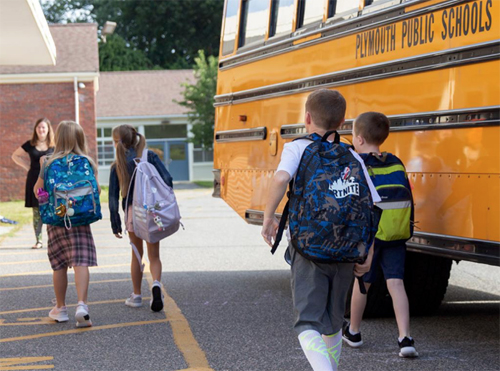
 SNBlog
SNBlog
By Jamie Bumgardner, Prime Communications
As technological tools have advanced over the years, schools, retail establishments, government buildings and other venues are increasingly using technology to improve security and save lives.
Today’s best practices for school security systems are composed of three main elements: access control, event detection and response – all while feeding into a unified security platform. The key is combining technology with well-thought-out strategies and training.
- Access Control: Proactively Preventing Violence
Prevention is better than having to deal with an active shooter incident and should be the first element of any K-12 security and safety plan.
Controlling access is a basic, yet powerful way to prevent active shooter situations. Gone are the days of one-room schoolhouses with a single locked door for protection. Today, most schools have hundreds of students and faculty with multiple entrances.
Here’s how technology can help identify pre-access threats:
- License Plate Recognition software (LPR) is sophisticated enough to “read” license plate numbers and associate them with filters/rules programmed into the system.
- Use monitored checkpoints for traffic and place access control in critical areas such as offices, side doors and entrances to sports venues.
- Monitor and control locked doors using a variety of coordinated security systems and door-lock controls.
Monitoring and controlling access is the foundation of a comprehensive security plan for any school. However, some threats may not be neutralized by access controls. So, the next step is to plan how technology will be used during an active shooter event.
- Active-Shooter/Violence Event Detection and Response
Seconds matter when it comes to saving lives. Event detection, response technology and strategy should focus on minimizing the time it takes to identify a crisis in progress – as well as the response time.
No one wants to believe an incident would happen at their own facility, but schools must be realistic and face the challenges head-on – putting security and safety technology into place and practicing responses.
Here’s how technology can help in an event situation:
- Use audio detection software to identify threats
- Work with security experts and law enforcement to create a plan that is automatically carried out to the best of your system’s ability – in concert with human responses.
- Use threat detection software to create an access plan that makes use of cameras, audio detection and access controls using key cards and pin pads.
- Technology can also be used to prompt automatic lockdown of every door in the school, including classrooms when the highest threat levels are reached.
- Automated Crisis Response through Unified Security Platforms
Automatic responses to school threats depend on different pieces of technology communicating with one another. Many schools in the United States do not have unified security platforms, which allow technology tools to “talk” with each other and carry out coordinated actions.
A proper automated system not only ensures student and staff safety within one school, but can automatically lockdown schools within a radius of the event, notifying proper staff so a shooter can’t go from school to school causing more damage.
In addition to preprogrammed software prompts designed to identify school threats, lock down doors and notify responders, a unified security platform can be coordinated with city technology to notify and support efforts of law enforcement. Ideally, schools, businesses and different city departments would use the same platform to aid in integration.
Whether it’s a scuffle or a life-threatening active-shooter incident, next time your K – 12 school faces a safety breach, it’s critical to be prepared. Schools cannot afford not to face these realities and take actions that give every life a chance.
To read more about how to pair technology and strategy to address active shooter incidents please visit this article by Prime Communications.
